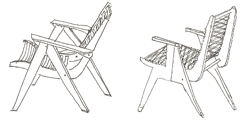Like many female artists, the name of 1950s New York street photographer Vivian Maier is not as well known as her that of her male peers. It’s not the fault of some anti feminist conspiracy however: Maier showed her work to no one. Instead this strange, solitary individual worked as a nanny in New York and Chicago, all the while taking picture after picture and storing them away in lockers. Not until 2007, when John Maloof stumbled upon the lockers in a Chicago thrift auction and made it his life’s mission to catalogue and exhibit Maier’s work, did anyone see this fantastic array of women and children, the drunk and the destitute, the old and the city.
Vivian Maier was born in 1926 and was of French and Austro Hungarian extraction. She travelled extensively between Europe and America eventually settling in New York and then later Chicago where she looked after other people’s children. An eccentric with strong opinions and decided liberal views, she seems not to have the support of friends and family. Perhaps she wanted it that way.
While Maier’s images show the grim poverty of city life they do not have an anthropological let’s-look-at-the-poor feel to them. Rather they are empathetic, street level studies which prompt thoughts of ‘look at you, look how you have applied that lipstick so carefully, look at how you’ve wound your hair round that bit of cardboard to coax a curl, look at you with your one shoe and one slipper, look at you soaking up a little lunchtime sunshine, look at you – look at how you lived’.
Maier became very poor herself, even enduring periods of homelessness until she was rescued by three of the now grown up children she had once looked after. Even so, her lockers, stuffed with over 100 000 images, home made documentaries and audio recordings, had to be sold to settle unpaid bills.
Vivian Maier died in 2009. These days her work is available to view at vivianmaier.com and is regularly exhibited. A handsome book contains many of her best images and a documentary film Looking for Vivian Maier is in production. Fascinating as these projects are, it would be more intriguing still to know Maier’s thoughts about the photographs she took. How did she choose her subjects? Why did she adopt the unusual square format and what, if anything, did she plan to do with her work? Has what has happened exceeded her hopes?
For so retiring a person, Maier took many self portraits (below) and often made Hitchcock-like cameo appearances in her pictures reflected in windows, mirrors and other shiny surfaces. Apparently she wanted to be seen after all.


















Marvelled at the photos, delighted that such a talent should be recognised. What a shame it had to be posthumous. She knew she was good, that’s why she kept them. She didn’t need anyone else to tell her she was good. Now we know. Thank you, avocado sweet for bringing such a body of work to our attention.
a true artist, without agenda, documenting simply what’s there, only of course it’s never simple.
this is almost life-changing stuff. or at the very least it can veer you off in other directions for a long time.
I’ve long been a fan of photographers like walker evans, & the stuff stanley kubrik did when he was a press photographer.
but this is different. uplifting. everyday, yet extraordinary.
looking at the website, the self-portraits are my favourites. we don’t know much about her, but we perhaps don’t need to.
the work speaks for itself.
I’m now desperate to buy the book if only I could remember my password for amazon…
well done AS. keep it coming.
forgot to say, next stop in posthumous geniuses, henry darger?